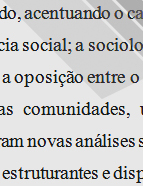

................................
But the great historiographical work of the Estado Novo was undoubtedly the extensive History of Portugal directed by Damião Peres (10 volumes published between 1928 and 1981, the first nine between 1928 and 1954) published by Portucalense Editora, in Barcelos, and volume 10 (1981) by Franco Nogueira on the period between 1933 and 1973. The diachronic mark of this history focuses on the idea of the “evidence” of Portuguese sovereignty: the Battle of São Vito, Mamede (1128), the Peace Treaty with Castile (1411), the death of
D. João III (1557), the Restoration (1640), the end of the reign of D. Maria I (1816), the end of Sidonism (1918), the Corporate Constitution (1933) and the April Revolution (1974). The work is dedicated “to the memory of our ancestors”, glorifies the “independent nation” and aims to present “the history of a great people, of a great nation”. It was therefore praised by the Ministry of Public Instruction (1934) and awarded diplomas of honour, notably at the Portuguese colonial exhibition (1934). It is, therefore, a history imbued with the nationalism characteristic of the Estado Novo, far, however, from an ideological undertaking, highlighted by the diversity and scientific standing of some of its contributors and where a positivist conception predominates in which the concrete functioning of institutions overshadows, with rare exceptions, the legal order and the framework of their powers.
Each of the five “Epochs” is divided into “parts” organised into chapters. The “parts” deal with different realities (politics, economics, social organisation, discoveries, etc.), and the thematic organisation is not homogeneous throughout the work. All periods open with the “part” relating to political history, but as far as “institutions” are concerned, it should be noted that in the first period, “social organisation and public administration” constitute an autonomous “part”, while in subsequent periods, political and administrative institutions are diluted in political history, while “cultural institutions” or “welfare institutions” become autonomous, sometimes all dealt with in the same “part” of the respective period. Let us now look at the historians who have studied institutions.
This work is financed by national funds through FCT - Foundation for Science and Technology, I.P, in the scope of the projects UIDB/04311/2020 and UIDP/04311/2020.
